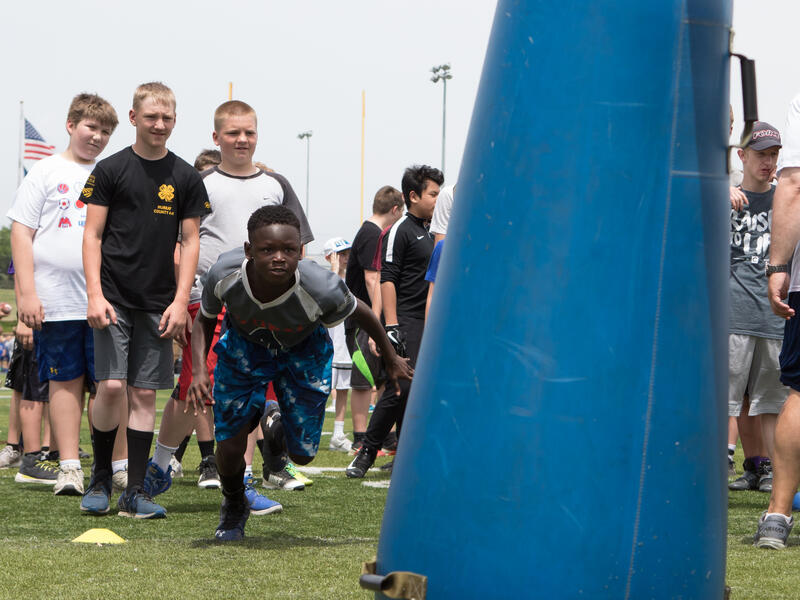Football is one of the most popular sports in America.
It’s also one of the most dangerous sports.
From concussions to torn ligaments, there’s a reason some former NFL players have compared every play to a car crash.
However, Sanford Health is playing its part to make the game safer. Especially for kids. The organization showcased this at a Physical Activity Alliance webinar for professionals in physical activity and public health nationwide Nov. 19.
Relationships help achieve goals
Thayne Munce is an assistant scientist/manager at Sanford Research in Sioux Falls, South Dakota. He presented at the webinar with a panel of experts including Tom Farrey, a former ESPN journalist who now leads Aspen Institute Sports and Society programs.
The Physical Activity Alliance, a national organization devoted to the promotion of physical activity, is the caretaker of the National Physical Activity Plan. A large component of this plan is the sport sector. The National Physical Activity Plan also has sectors of public health, mass media, transportation, health care, faith-based settings, education, community and recreation, and business and industry.
One of the strategies within the sports sector, according to the Physical Activity Alliance’s website, is that: “Sports organizations should ensure that sports programs are conducted in a manner that minimizes the risk of sports-related injuries and illnesses.”
More: National sports medicine council welcomes Sanford surgeon
Sanford Health has a standing partnership with the American College of Sports Medicine. That partnership has formed the National Youth Sports Health and Safety Institute (NYSHSI). Munce, a member of the NYSHSI leadership board, said the institute wanted to take a leading role in the sport sector of the National Physical Activity Plan, particularly the safety strategy.
“We thought we could do that by providing examples of a youth sports organization that has in fact taken that strategy and brought it into action. And we didn’t have to look too far finding that organization. We found it right in our backyard in South Dakota in South Dakota Junior Football,” he said.
Munce has worked with South Dakota Junior Football for over 10 years, particularly in concussion research.
“They’ve taken a number of proactive steps, and have developed them through the years, that put the health and safety of their youth athletes first and foremost,” he said. “They’ve done a number of things from concussion education to providing proper equipment and partnering with a health care organization in Sanford Health.”
Sports safety model to follow
Munce said South Dakota Junior Football has created a “model environment” for the health and safety of its participants.
To help tell its story, Munce shared a video with webinar attendees. Numerous members of the health and wellness communities were interviewed on the work South Dakota Junior Football has done to emphasize the safety of players.
“We’re going to highlight South Dakota Junior Football and congratulate them on the work they’ve done by really setting them up as an example for other youth sports organizations in the United States to follow,” he said.
By partnering with South Dakota Junior Football, Munce said Sanford is helping to make sports, and football in particular, safer for generations to come.
“It shows that Sanford is a pioneer in working with youth sport organizations and promoting community. We understand sports are a tremendous opportunity for community health and wellness. We understand that to promote that within your community you have to get involved, and we’ve taken a very active role in getting involved. Both through the facilities we have at the Sanford Sports Complex, and partnering with organizations like South Dakota Junior Football.
“I think what we’re doing is unique in the United States and people recognize that. Everyone from the American College of Sports Medicine, to the Physical Activity Alliance – they see what we’re doing here in Sioux Falls. They see the partnerships we’re building, and that we’re not just talking about what needs to be done. We’re actually doing it.”
Learn more
…
Posted In
Research, Sports Medicine
Leave A Reply






More Stories
Discovering 6 Luxurious Hotels in Spain and Portugal
Sports for the soul: How being active improves your mental health
Teams debate the power of sport at the Commonwealth Secretariat